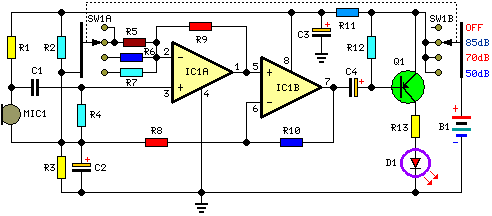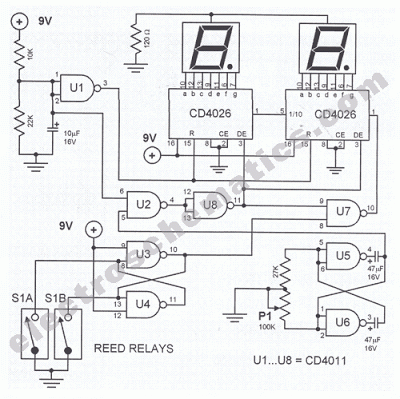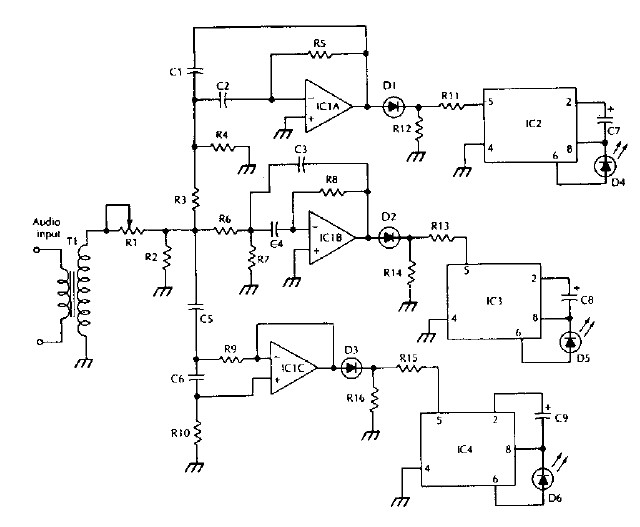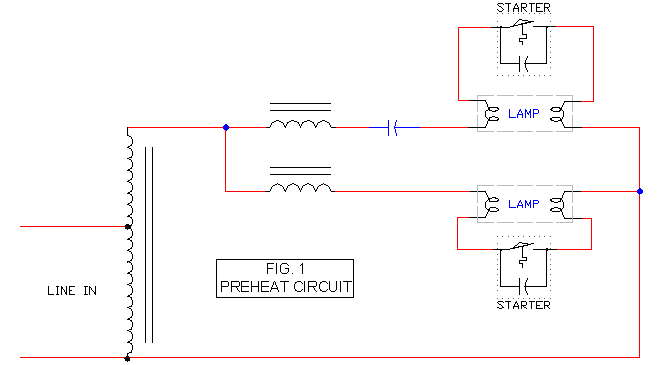
Active low-pass filter LM102 schematic
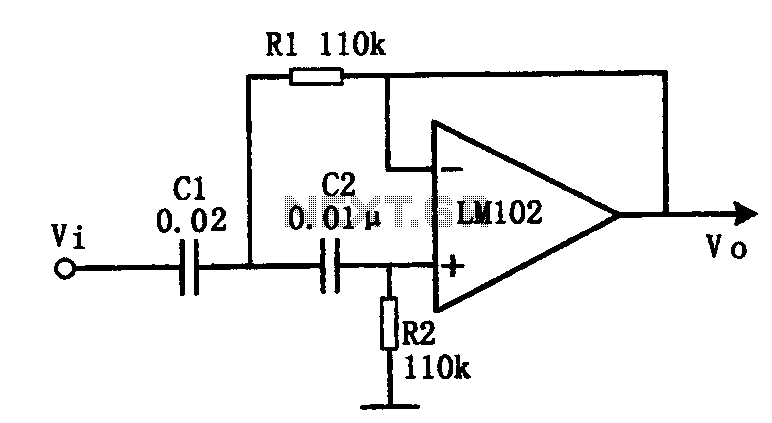
This document presents an active low-pass filter circuit with a cut-off frequency (fc) of 10 kHz. The circuit allows for various values for the ratios of resistors R1 and R2, as well as capacitors C1 and C2. Specifically, it can be configured with R1 equal to R2 and C1 equal to twice C2. Alternatively, the circuit can also be arranged with C1 equal to C2 and R1 equal to twice R2.
The active low-pass filter circuit is designed to attenuate frequencies above the cut-off frequency while allowing lower frequencies to pass through with minimal attenuation. The cut-off frequency, defined by the formula fc = 1/(2πRC), is determined by the values of the resistors and capacitors used in the circuit. In this case, the chosen cut-off frequency of 10 kHz indicates the point at which the output signal begins to decrease in amplitude relative to the input signal.
When configuring the circuit, the selection of resistor and capacitor values is crucial. For instance, if R1 is set equal to R2, it maintains a balanced voltage divider, which is essential for stable operation. The relationship between C1 and C2, where C1 is double the capacitance of C2, allows for flexibility in tuning the filter's response characteristics. This configuration can be particularly useful in applications where precise filtering is required, such as in audio processing or signal conditioning.
Alternatively, setting C1 equal to C2 and R1 equal to twice R2 creates a different filter response, which can be useful in scenarios where a specific phase shift or gain is desired. The ability to adjust these parameters provides versatility in designing filters tailored to specific frequency responses or application requirements.
Overall, the active low-pass filter circuit is a fundamental building block in electronic design, providing essential functionality in a wide range of applications, from audio systems to data acquisition and signal processing. Careful consideration of component values and configurations will yield optimal performance in filtering unwanted high-frequency noise while preserving the integrity of the desired low-frequency signals.Shown for the active low pass filter circuit. Cut-off frequency fc of the circuit = 10kHz. Circuit, R1 and R2 ratio and the ratio of C1 and C2 can be various values. This circuit uses R1 = R2 and C1 = 2C2. Using C1 = C2 and R1 = 2R2 can.
The active low-pass filter circuit is designed to attenuate frequencies above the cut-off frequency while allowing lower frequencies to pass through with minimal attenuation. The cut-off frequency, defined by the formula fc = 1/(2πRC), is determined by the values of the resistors and capacitors used in the circuit. In this case, the chosen cut-off frequency of 10 kHz indicates the point at which the output signal begins to decrease in amplitude relative to the input signal.
When configuring the circuit, the selection of resistor and capacitor values is crucial. For instance, if R1 is set equal to R2, it maintains a balanced voltage divider, which is essential for stable operation. The relationship between C1 and C2, where C1 is double the capacitance of C2, allows for flexibility in tuning the filter's response characteristics. This configuration can be particularly useful in applications where precise filtering is required, such as in audio processing or signal conditioning.
Alternatively, setting C1 equal to C2 and R1 equal to twice R2 creates a different filter response, which can be useful in scenarios where a specific phase shift or gain is desired. The ability to adjust these parameters provides versatility in designing filters tailored to specific frequency responses or application requirements.
Overall, the active low-pass filter circuit is a fundamental building block in electronic design, providing essential functionality in a wide range of applications, from audio systems to data acquisition and signal processing. Careful consideration of component values and configurations will yield optimal performance in filtering unwanted high-frequency noise while preserving the integrity of the desired low-frequency signals.Shown for the active low pass filter circuit. Cut-off frequency fc of the circuit = 10kHz. Circuit, R1 and R2 ratio and the ratio of C1 and C2 can be various values. This circuit uses R1 = R2 and C1 = 2C2. Using C1 = C2 and R1 = 2R2 can.
